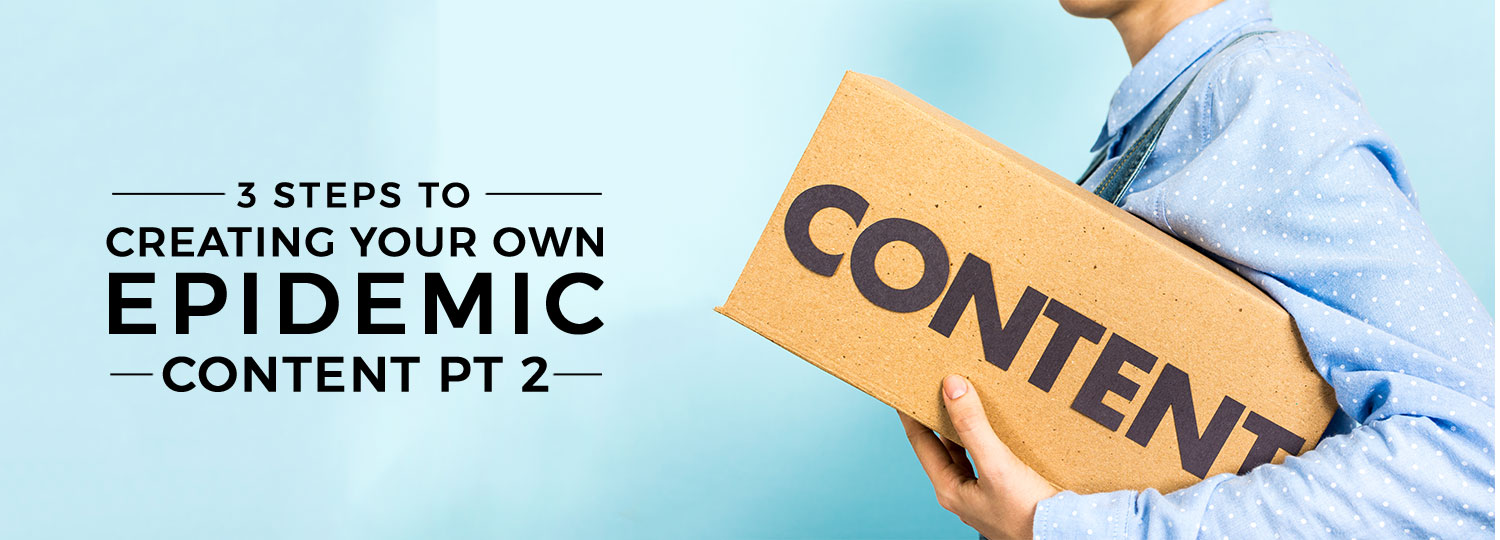
Click here for part 1 of Creating Your Own Epidemic Content
Now you’ve turned heads, grabbed eyeballs, stopped traffic and otherwise made a big splash on the Internet, what do you do with all the attention?
After going all out to grab that initial spurt of attention, the next challenge lies in not falling into the ‘click-bait’ trap.
Click-bait refers to transparent marketing ploys usually involving sensationalistic headlines or photos that entice readers to click on a link only to redirect them to a site that doesn’t deliver the content promised.
This is usually the result of poor advertising strategies that use page views as an indicator of success rather than the satisfaction of the user.
What’s more, social media platforms like Facebook are realising the abundance of click-baiting that are going on and are cracking down on such activities, so don’t be surprised at your article’s low reach if it has been determined by Facebook to be a click-bait.
Retain and engage
So how, then, does one manage to retain their audience’s fleeting attention for the entire duration of their content?
A. Produce quality content
There are no 2 ways about it – if you want your content to be a success, it’s got to have some substance to it. Whilst this may sound pretty ‘duh’, it’s a concept that somehow eludes the majority of content producers online, which means your quality production will likely make an impression if you can get them to read through it.
That’s good news! Now the question is, what makes quality content?
Research done by scholarly people have shown stories that evoke high-arousal emotions are particularly infectious online. High-arousal emotions – no, not that kind of arousal – include excitement, awe, fear, anger, anxiety, mirth, shock, joy, panic, you get the idea.
Content that manages to stir up such emotions are preferred for consumption by Internet users and are also a lot more likely to get shared among friends – but we’d get into that in Part 3.
On the flip side, content that generates low-arousal emotions like sadness or mild amusement often get passed over and forgotten.
Of course, quality content can take countless forms: useful advice, inspirational quotes, spectacular videos, funny texts. There are many ways to tickle the fancy of your audience as long as you help them reach inwards for the emotions they don’t get to feel on a daily basis.
B. Keep to the 5-second rule

source: http://devonburke.tumblr.com/
Like how you wouldn’t eat any food that’s been on the floor for more than 5 seconds, cyber people are likely to discard your content if they haven’t been engaged in about the same amount of time.
The sad truth is that attention spans around the civilised world are shortening a mile a minute; research has shown close to 20% of a video’s audience click away within the first 10 seconds of a video, and the only way to get around that is to get to your point fast.
Gone are the good old days where you save the best for last – now, if you’ve got footage of a giraffe eating a crocodile eating a shark, you put that right at the beginning of your video and save the build-up to that strange event for after when attention has already been irrevocably caught.
C. Be short and sweet

source: tldrsocial.tumblr.com
TL;DR is the bane of any online marketer’s life – it stands for Too Long; Didn’t Read, which is the Internet’s brutal way of telling you that your long grandmother story has gone totally unappreciated.
Remember how people like list-type articles? With Top 10 this or that, they are more likely guaranteed a short read because the parameters of the piece have already been set. But if you’d prefer not to use lists, try to stay within a word count of 1,600 words which translates roughly to a 7-minute read – the magic number that certain social media gurus believe is the ideal length of an online piece.
For a video, that number is even shorter – by the time a minute is up, almost 50% of viewers will have abandoned watching a video.
Now everyone will be reading your content – from top to bottom, to boot! It’s time to get them liking, commenting, and sharing, which we’d look at in Part 3.


